Filter by Type
Filter by Category
Filter by Size
Filter by Year
Artists
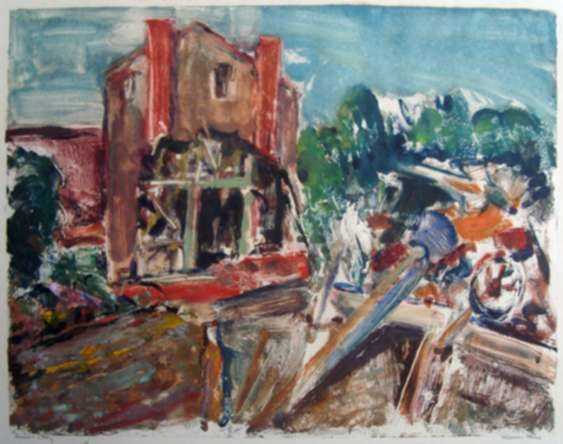
Marion Huse
American (1896-1967)
Born in Lynn, Massachusetts, Marion Huse attended the New School of Design in Boston and the Carnegie Institute of Art in Pittsburgh. Her summers were spent painting in Europe and studying with Charles Hawthore in Provincetown. In 1924, she moved to Springfield, MA. From 1925 to 1940, she founded and operated the Springfield Art School in a space adjacent to her studio.
In the 1930's, Huse was first appointed a non-relief artist under the Works Progress Administration. She later became the supervisor of the WPA for the western part of the state. At this time, too, she acquired a studio in Pownal, Vermont.
These paintings of the Green Mountains, as well as those of the streets and factories of Springfield, are typical of works of "The American Scene" and were regularly exhibited in galleries and museums throughout the country.
In the 1940's, Huse began her pioneering experimentation with serigraphy and monotype printmaking. With her marriage in 1944, she moved to Albany, NY. When her husband was stationed in France during World War II, Huse traveled with him and continued her work on the other side of the Atlantic. She is credited with having the first one-person show of serigraphs in Paris, in 1947. Even though she would return to Pownal and Albany, she made frequent return trips to Europe and became increasingly interested and influenced by European Modernism and the School of Paris.
The subjects of her prints and paintings are diverse, chronicling her many travels from New England to Canada, to Taos, to New York, and to Europe. During her lifetime, Huse was honored with numerous exhibitions and awards. Her works can be found in the permanent collections of the Fuller Art Museum, Brockton; The Museum of Fine Arts, Boston; The US State Department; The Library of Congress; The Victoria and Albert Museum, London; and many other find public and private collections.
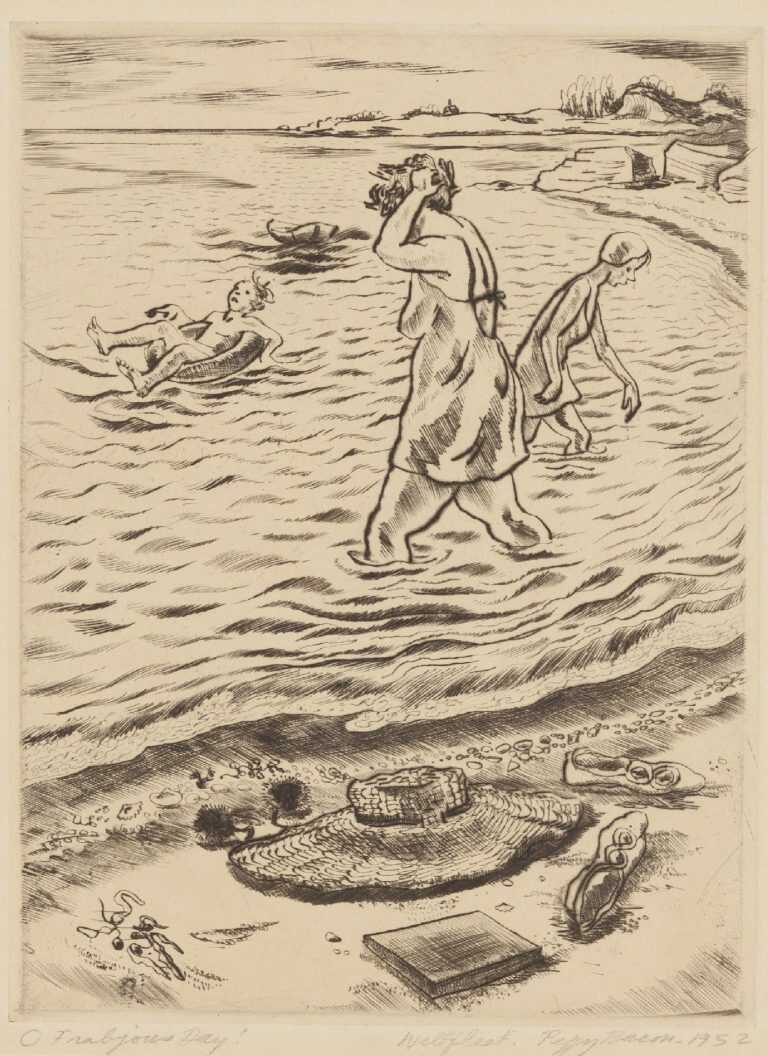
Peggy Bacon
American (1895-1987)
Peggy Bacon was born in Ridgefield, Connecticut in 1895 to two painters: Charles Rosewell Bacon and Elizabeth Chase. As a result of her parents' occupations, much of Peggy's childhood revolved around the constant hunt for new painting locations in Nassau, France, New Hampshire and London, all the while being exposed to other painters and members of the art community.
By 1914 Peggy Bacon had begun to pursue a professional career in art, joining the Art Student's League, a group to which she would belong for the next six years. By 1919 she began to make drypoints that often reflected realist influence of her teachers George Bellows and John Sloan but her flattened forms and hardened contours indicated a more modern and abstract approach to art.
After marrying fellow Art Student's League member Alexander Brook, Bacon and Brook split their time between Provincetown, Rhode Island and Greenwich Village in New York City where they became valued members of the Woodstock art colony.
During the 1920s, Bacon held several one-woman shows in New York while also illustrating children's books. Much of her work was satirical and lighthearted and frequently commented on the New York art world. She also illustrated many ordinary events in the lives of city people, frequently giving these pieces a wry twist. Her satirical work culminated in 1934 with the Guggenheim Museum sponsoring her publishing a book entitled, "Off with Their Heads" that featured caricatures of prominent individuals. The great success of the book rocketed her to the forefront of modern satiric art but she ignored the increase in demand for her caricatures as she found them to be a hurtful theme.
Bacon remained successful for the rest of her career, eventually joining a group of New York artists under the aegis of Gertrude Vanderbilt Whitney. Although she divorced her husband in 1940, Bacon continued to paint and took up writing. In 1953 she won the Edgar Allen Poe Mystery Award, given in recognition of the novel of the year, for her work The Inward Eye. Bacon retired to Cape Porpoise, Maine, and spent the rest of her days near her son, Alexander.
Information courtesy of: www.askart.com
The Columbus Museum of Art, Georgia
Works by Peggy Bacon
Works by Thomas W. Wood
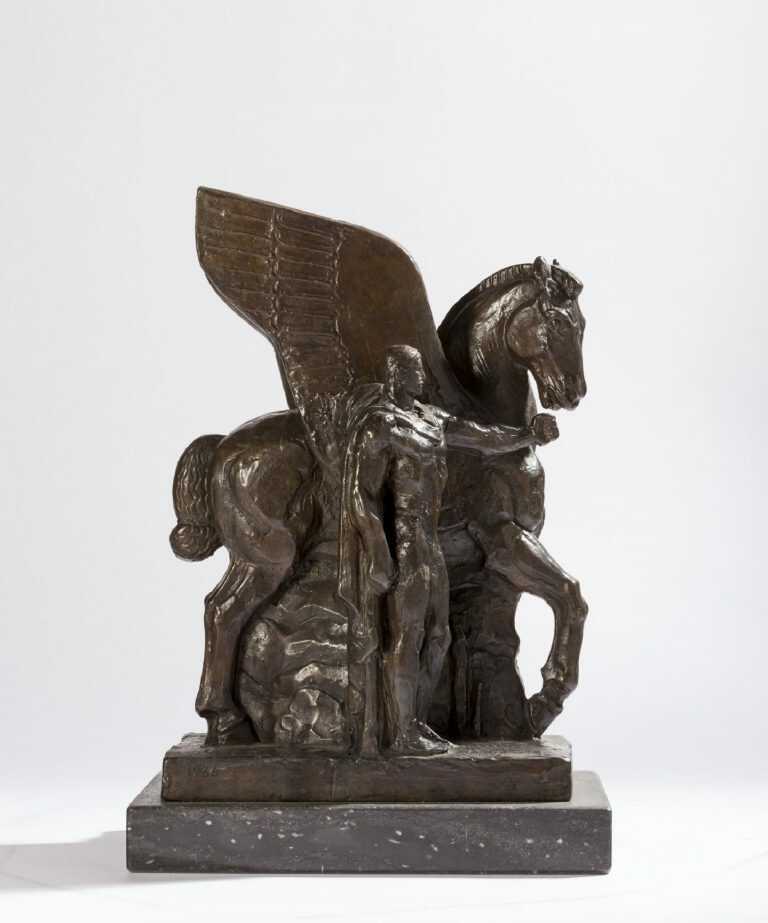
Walker Kirtland Hancock
American (1901-1998)
Hancock began his interest and passion for sculpture at an early age. Before he was 19, he won a scholarship to the Saint Louis School of Fine Arts where he studied with Victor Holm (1876-1935) and Edmund Henry Wuerpel (1866-1958), as well as attended the School of Fine Arts at Washington University and the University of Wisconsin. By 1919, Hancock had created four bronze memorials tablets for the Westminster Presbyterian Church, Saint Louis, and two schools in Saint Louis.
From 1921 to 1925, when Hancock won the Prix de Rome, he studied at the Pennsylvania Academy of the Fine Arts under Charles Grafly (1862-1929). Hancock did very well there; he won the Cresson Traveling Scholarship in 1922 and 1923, and the George D. Widener Memorial Gold Medal for his sculpture Toivo (1924), which he had entered in the academy's annual exhibition.
The Prix de Rome was a significant award, and provided Hancock the opportunity to study in Rome and be exposed to classical art. Hancock was strongly influenced by the experience and never lost his ties to the American Academy in Rome. He returned as a sculptor-in-residence at the academy in 1956-57 and again in 1962-63.
After his return to the United States, he replaced Grafly as the head of the sculpture department at the Pennsylvania Academy and won the academy's fellowship in 1932 for his sculpture Bird Charmer. Hancock also received the academy's gold medal of honor and was elected President of their Fellowship in 1952. He also taught at the Art Students League and at the National Academy of Design.
The majority of Hancock's work consists of public commissions from portrait statues to friezes on public buildings to war memorials. Most notable is his work at the 1939 New York World's Fair and his World War II memorials at the Thirtieth Street Railroad Station in Philadelphia (1948) and at the Lorraine American Cemetery in Saint Avold, France (1960). Installed in 1988, in the Great Hall of the Supreme Court Building in Washington, is his portrait in marble of Chief Justice Warren Burger. Hancock also worked on a bust of President George Bush, which was commissioned while Bush was President of the United States Senate.

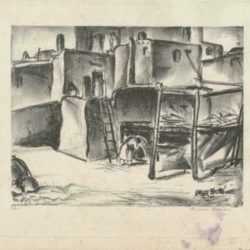
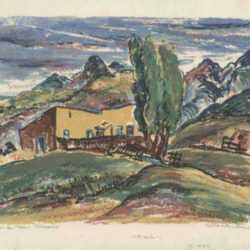
![Print by Marion Huse: Rancho de Taos Mission [New Mexico], represented by Childs Gallery](https://childsgallery.com/wp-content/uploads/marion_huse_rancho_de_taos_mission__new_me_93-4-09-003_childs_gallery-250x237.jpg)
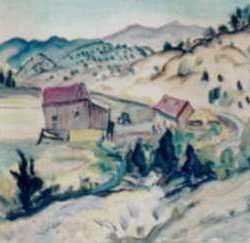
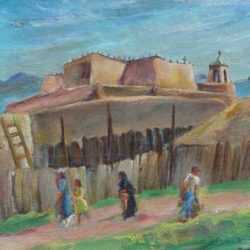
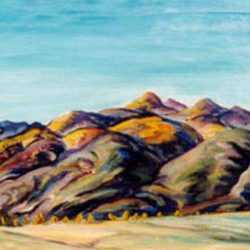
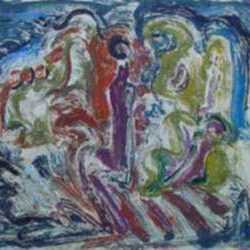
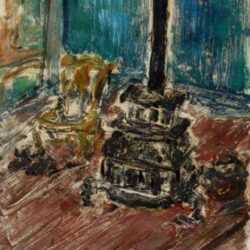
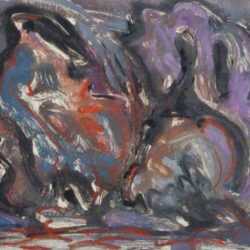
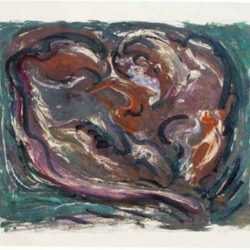
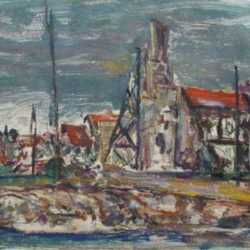
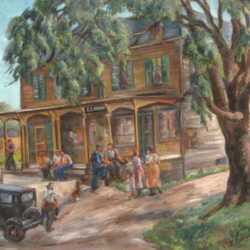
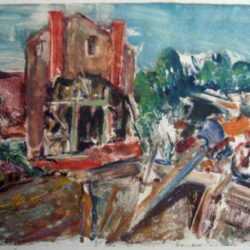
![Drawing by George F. Bosworth: [Gloucester (Massachusetts)], represented by Childs Gallery](https://childsgallery.com/wp-content/uploads/george_f._bosworth__gloucester__massachusetts___x196_childs_gallery-1-250x250.jpg)
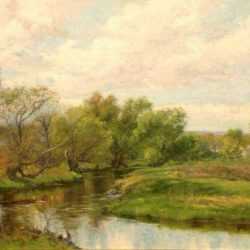
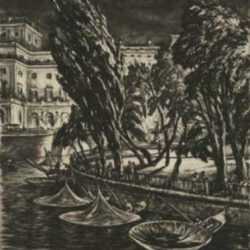
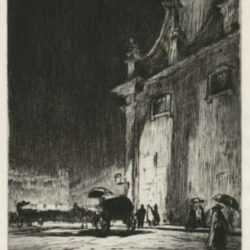
![Print by Muirhead Bone: Evening, Port of Genoa [Italy], represented by Childs Gallery](https://childsgallery.com/wp-content/uploads/muirhead_bone_evening__port_of_genoa__italy__p2168-17_childs_gallery-250x243.jpg)
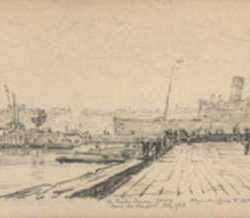
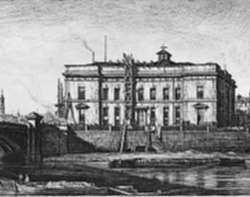
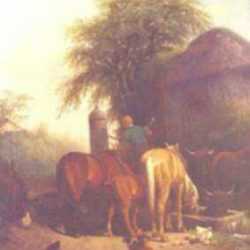
![Drawing by Peter Moran: [Farmyard], represented by Childs Gallery](https://childsgallery.com/wp-content/uploads/peter_moran__farmyard__cgl54374-4_97-17-616_childs_gallery-250x250.jpg)
![Drawing by Peter Moran: [Landscape with Cattle], represented by Childs Gallery](https://childsgallery.com/wp-content/uploads/peter_moran__landscape_with_cattle__cgl54374-3_97-27-615_childs_gallery-250x250.jpg)
![Drawing by Peter Moran: [The Footbridge], represented by Childs Gallery](https://childsgallery.com/wp-content/uploads/peter_moran__the_footbridge__cgl54374-2_97-17-614_childs_gallery-250x250.jpg)
![Drawing by Peter Moran: [Country Road], represented by Childs Gallery](https://childsgallery.com/wp-content/uploads/peter_moran__country_road__cgl54294-6_childs_gallery-250x250.jpg)
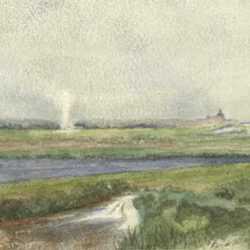
![Drawing by Peter Moran: [Tree Study], represented by Childs Gallery](https://childsgallery.com/wp-content/uploads/peter_moran__tree_study__cgl54374-1_97-17-613_childs_gallery-250x250.jpg)
![Drawing by Peter Moran: [Hillside Pasture], represented by Childs Gallery](https://childsgallery.com/wp-content/uploads/peter_moran__hillside_pasture__cgl54374-6_97-17-618_childs_gallery-250x250.jpg)
![Drawing by Peter Moran: [The Pond], represented by Childs Gallery](https://childsgallery.com/wp-content/uploads/peter_moran__the_pond__cgl54374-5_97-17-617_childs_gallery-1-250x250.jpg)
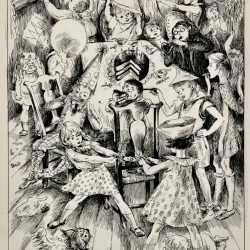

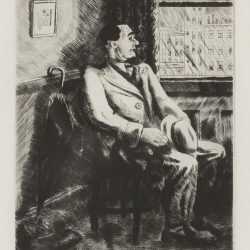
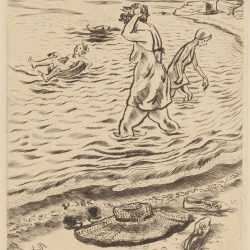

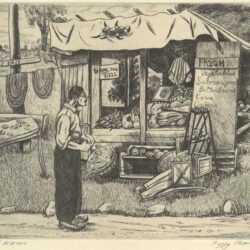
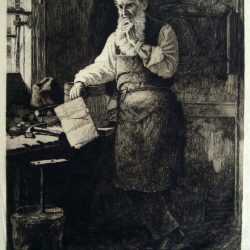
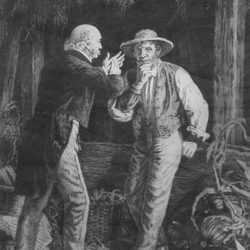
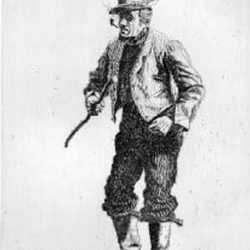
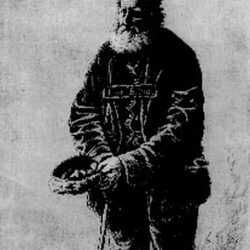

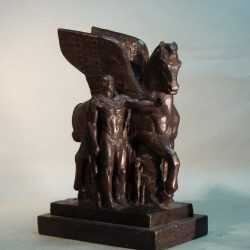
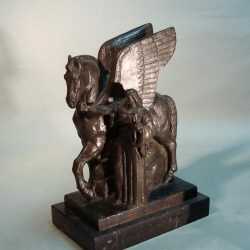
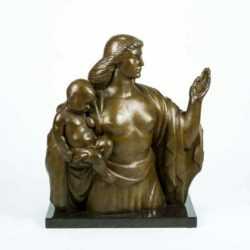
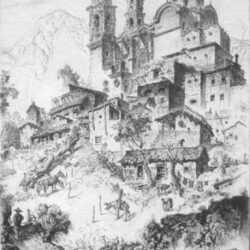
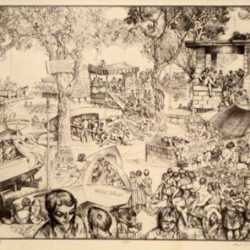
![Drawing by Joseph Pennell: Yarmouth Beach [Great Yarmouth Beach, Norfolk, England], represented by Childs Gallery](https://childsgallery.com/wp-content/uploads/joseph_pennell_yarmouth_beach__great_yarmouth_cgl55686-05a_childs_gallery.jpg)